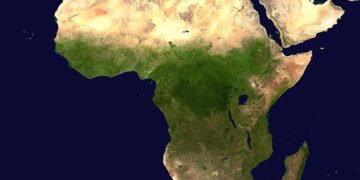The World Health Organization (WHO) stands at a pivotal crossroads as global health challenges grow increasingly complex and interconnected. In a recent analysis by the Center for Global Development, experts argue for a leaner, more efficient WHO-one that can better coordinate international efforts, respond swiftly to crises, and maximize impact with limited resources. This vision for a streamlined WHO aims to enhance transparency, accountability, and agility, ultimately serving the global community more effectively. As health emergencies continue to transcend borders, the call for reform within the world’s leading health authority has never been more urgent.
A Streamlined World Health Organization Enhances Global Crisis Response
The recent restructuring within the World Health Organization marks a decisive shift toward a more agile and responsive global health entity. By minimizing bureaucratic layers and optimizing resource allocation, the organization is now better equipped to act swiftly during international health emergencies. This streamlined approach has already begun to shorten decision-making timelines, enabling quicker deployment of medical aid and expertise to crisis zones worldwide.
Key elements of the new structure include:
- Decentralized regional hubs empowered with increased autonomy.
- Integrated digital communication platforms for real-time data sharing.
- Cross-functional rapid response teams trained for diverse health threats.
| Metric | Pre-Restructuring | Post-Restructuring |
|---|---|---|
| Average Response Time | 14 days | 7 days |
| Decision Layers | 6 | 3 |
| Regional Autonomy Level | Low | High |
Optimizing Funding Structures to Boost Efficiency and Accountability
Reforming the financing framework of the WHO is crucial to enhancing its operational precision and ensuring funds are used strategically to maximize global health outcomes. Currently, a significant portion of WHO’s budget is composed of earmarked contributions, limiting its flexibility to allocate resources where they are needed most urgently. By shifting towards a funding model with a greater percentage of flexible, untied funding, the organization can swiftly respond to emergent health crises without bureaucratic delays or restrictions. This would also enable long-term investment in neglected areas such as health system strengthening and pandemic preparedness.
- Increase predictable funding: Encourage Member States to commit to multi-year funding cycles.
- Enhance transparency: Implement real-time tracking of fund utilization and impact reporting.
- Foster accountability: Develop robust monitoring frameworks tied to clear performance indicators.
Aligning incentives for donor contributions with clear accountability mechanisms will build trust among stakeholders and create a culture of results-driven financing. A restructured funding ecosystem could be represented by the following simplified breakdown:
| Funding Type | Current % | Proposed % |
|---|---|---|
| Core (Flexible) Contributions | 20% | 50% |
| Earmarked Funds | 80% | 50% |
Recommendations for Strengthening WHO’s Role in Global Health Governance
To enhance its impact on global health outcomes, WHO must embrace a more focused and agile framework. Prioritizing core functions such as disease surveillance, emergency response coordination, and setting international health standards will enable the organization to deploy resources more efficiently. Empowering regional offices with greater decision-making autonomy can facilitate quicker responses tailored to local contexts, reducing bureaucratic bottlenecks that often delay critical interventions. Furthermore, strengthening public-private partnerships and incorporating innovative digital health tools will expand WHO’s operational capacity without significantly increasing overhead costs.
Transparency and accountability are crucial for regaining trust among member states and stakeholders. WHO should implement a more robust performance evaluation mechanism that tracks progress against clear, measurable targets, such as vaccination coverage rates and outbreak containment timelines. Establishing an independent advisory council to review these metrics can ensure objectivity and foster continual improvement. Below is a comparative overview of strategic priorities essential for WHO’s revitalized mandate:
| Strategic Priority | Current Status | Recommended Action |
|---|---|---|
| Emergency Preparedness | Fragmented coordination | Enable decentralized decision-making |
| Health Standards & Guidelines | Slow adoption process | Streamline country-level implementation |
| Digital Health Innovation | Underutilized capacity | Integrate AI and data analytics |
| Public-Private Partnerships | Limited collaboration | Expand multi-sector engagement |
| Performance Monitoring | Inconsistent reporting | Establish independent oversight |
The Conclusion
As the World Health Organization navigates complex global health challenges, calls for a leaner, more agile institution continue to gain momentum. Advocates argue that streamlining operations and enhancing efficiency are crucial for the WHO to better fulfill its mandate and respond swiftly to crises. The Center for Global Development’s analysis sheds light on practical pathways to reform, emphasizing transparency, accountability, and innovation. Ultimately, a revitalized WHO stands to benefit not only the global health community but populations worldwide, reinforcing its role as a catalyst for collective well-being in an increasingly interconnected world.






























